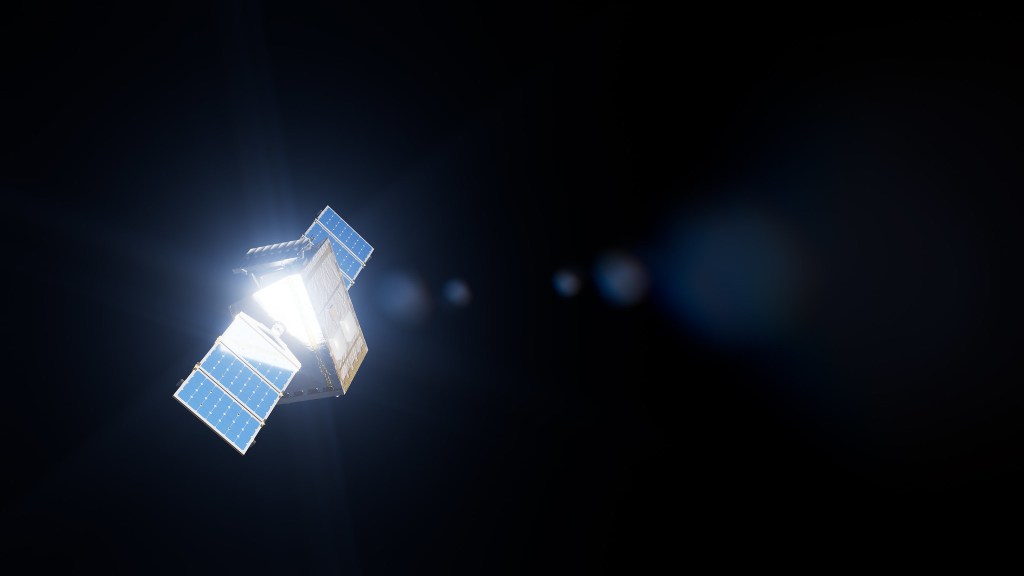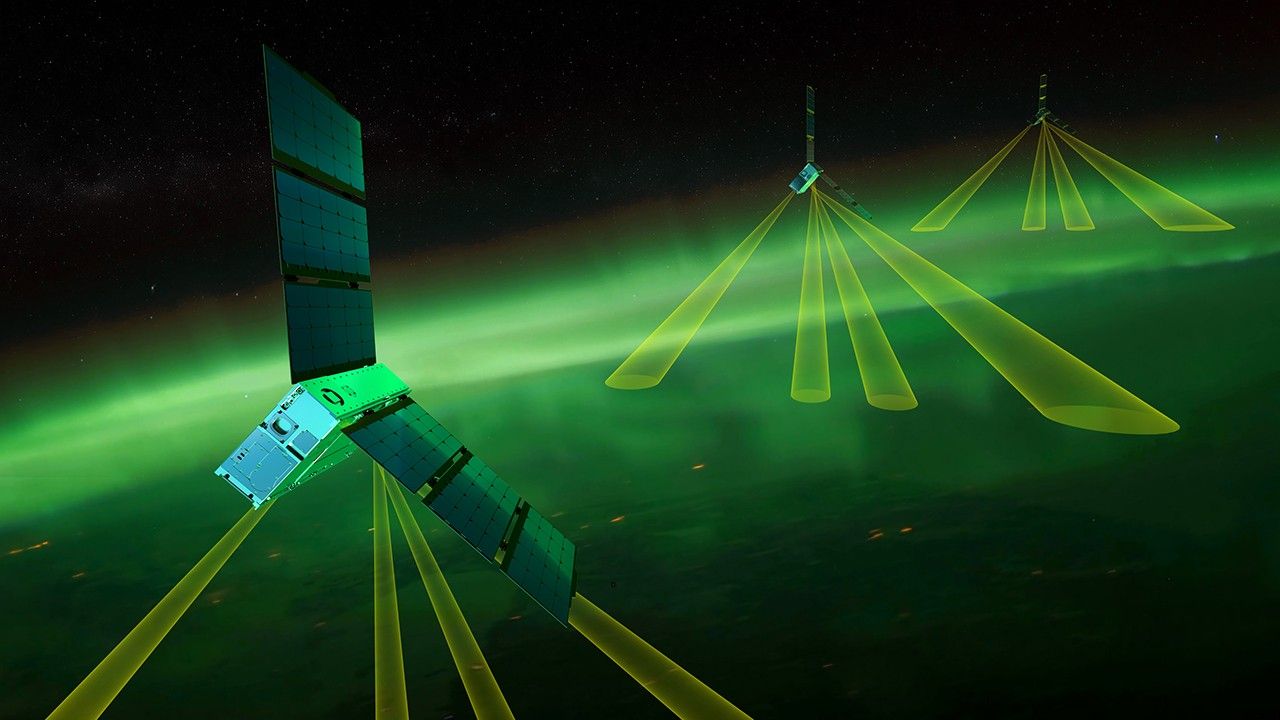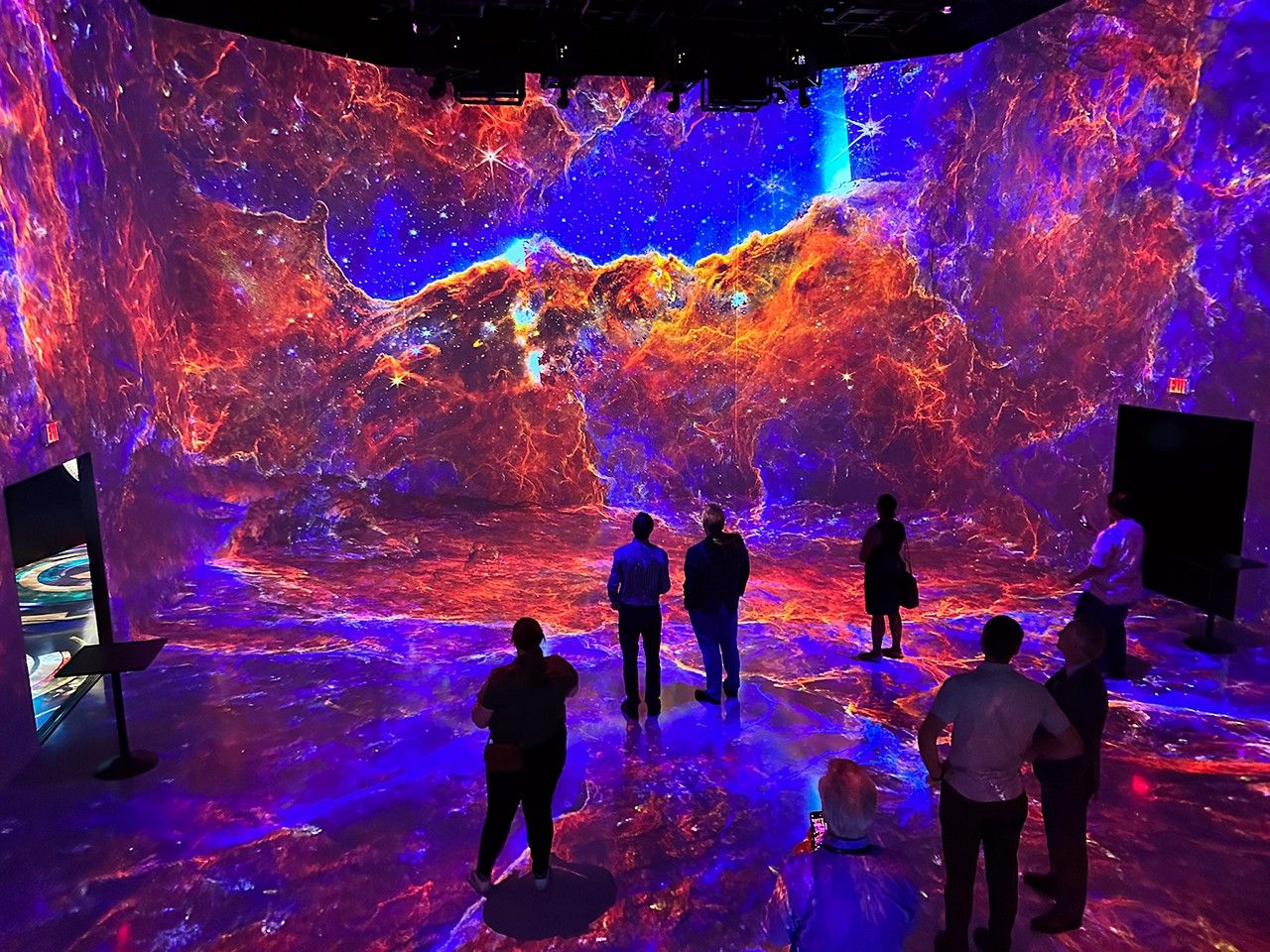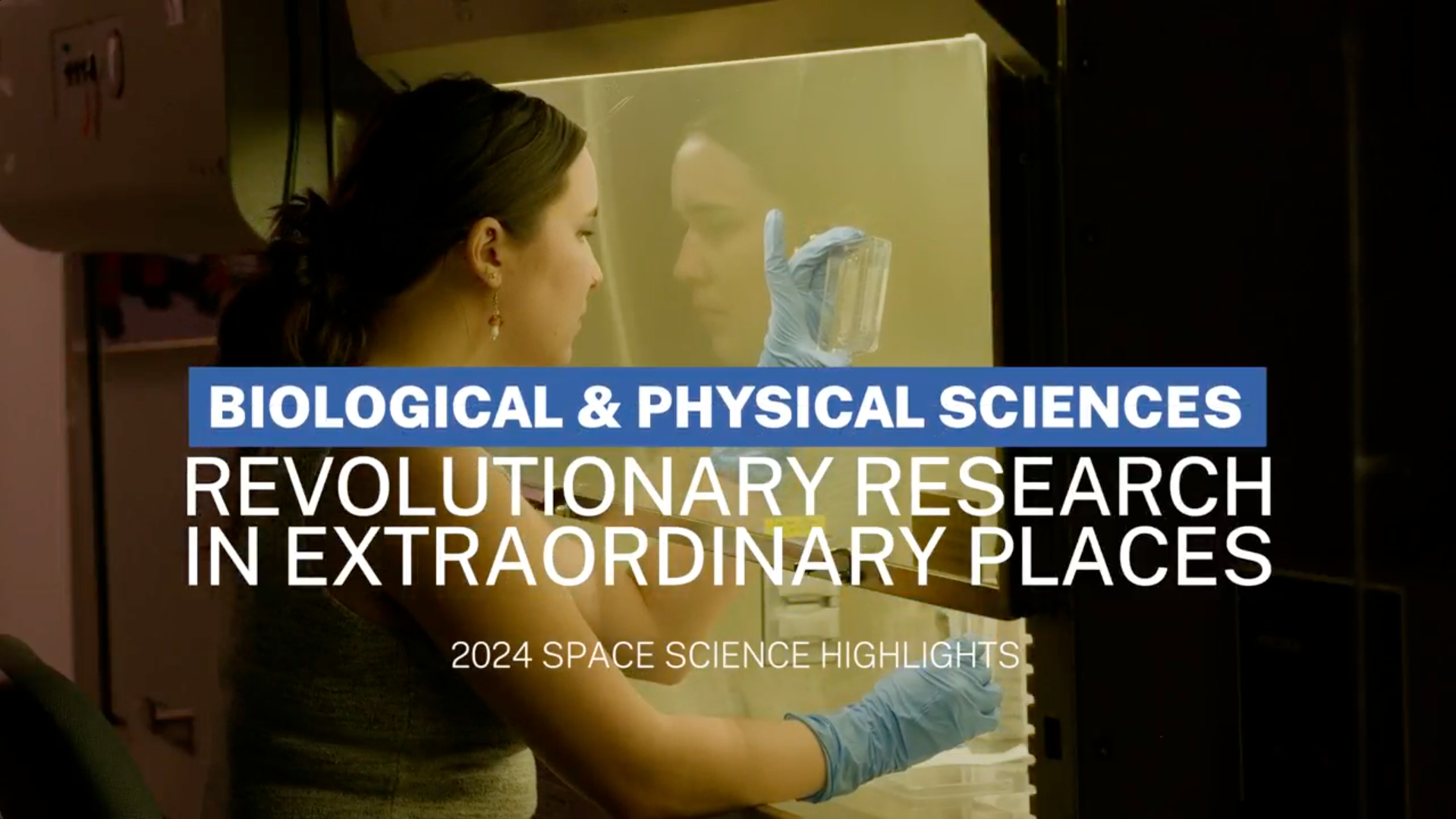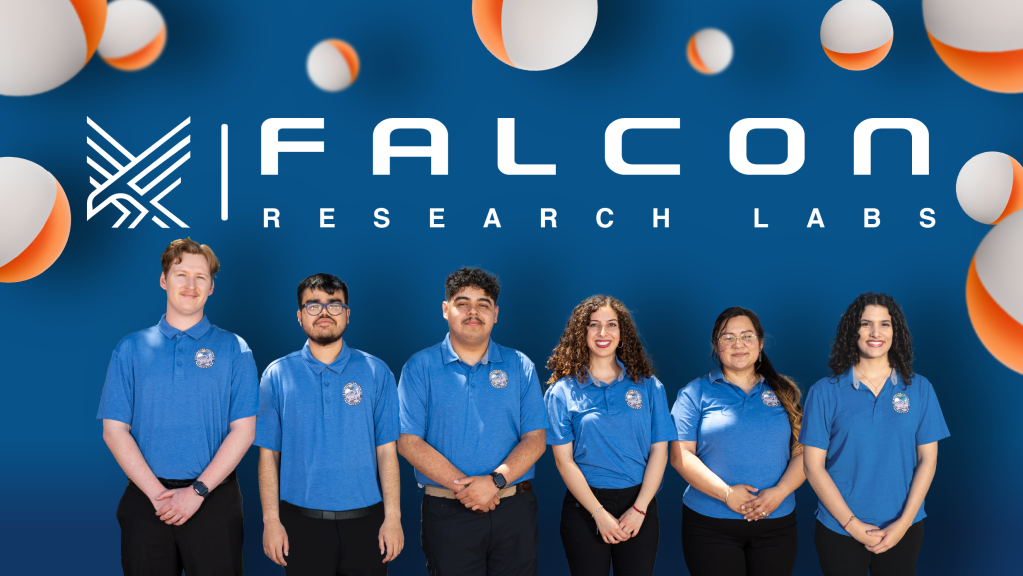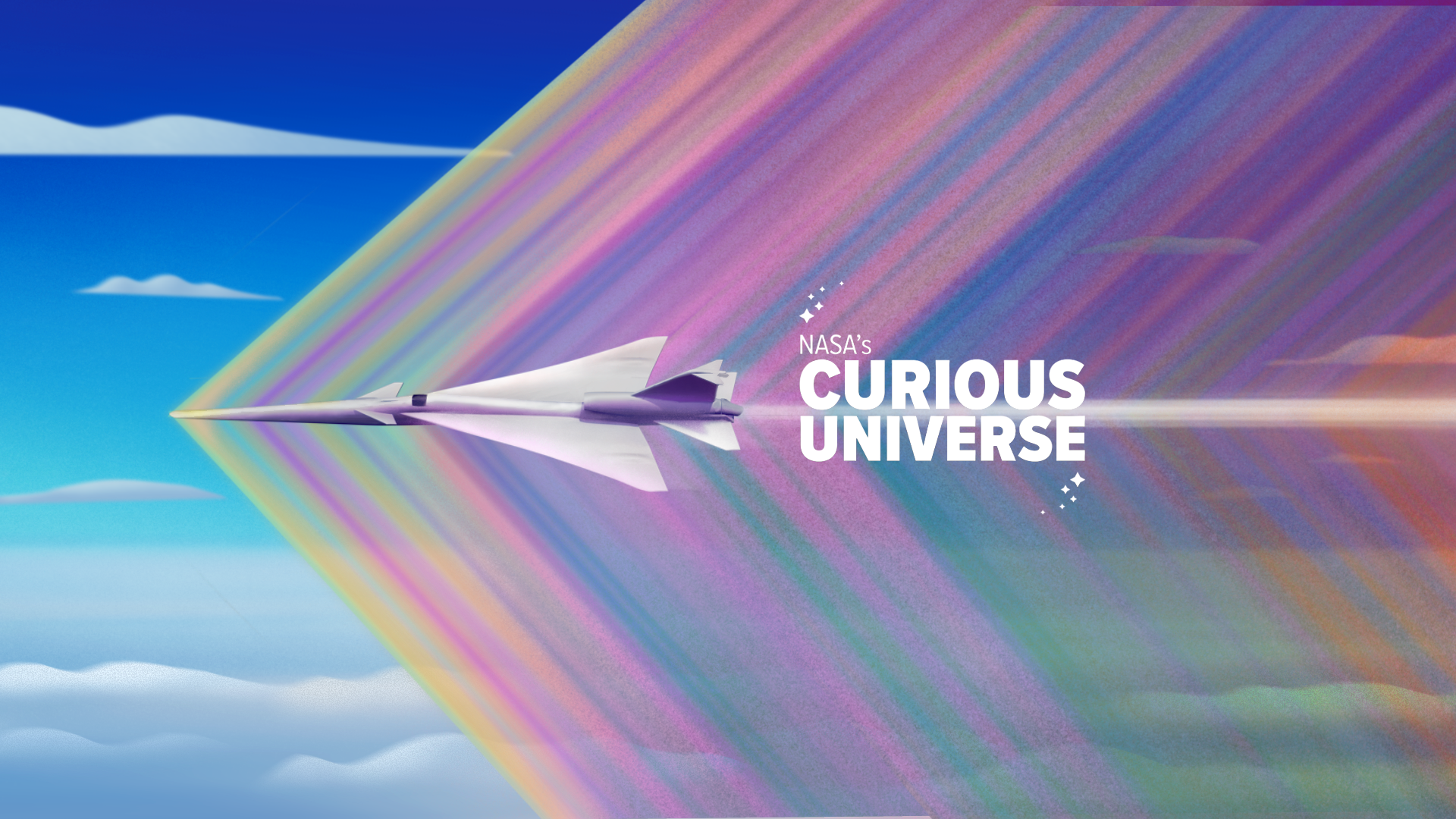
Our universe is a wild and wonderful place. Join NASA astronauts, scientists and engineers on a new adventure each episode — all you need is your curiosity. Explore the lifesaving systems of space suits, break through the sound barrier, and search for life among the stars. First-time space explorers welcome.
Episode Description: When a plane flies faster than the speed of sound, you get a sonic boom! But what if we could change those physics? Join NASA test pilot Nils Larson and aerospace engineer Lori Ozoroski to hear how we’re flying faster than the speed of sound, and making that supersonic flight quieter, too.
Subscribe
[Song: Seven Wonders Instrumental by Blythe Joustra]
Nils Larson
The one thing I really love about flying is, it’s the freedom that you kind of feel. Flowing through the air, you can feel it somewhat when you’re in a swimming pool or if you’re a scuba diver or something like that.
[[Underwater bubbling sounds]]
Nils Larson
There’s just something else about that kind of freedom you feel. The research side of stuff makes it really cool that, you know, for me, it can be the most boring flight I’ve ever flown. But at the same time, it can be exciting because I know what we’re getting from this. The scientific discovery part of what I get to do as a research pilot can be just as exciting as getting into the airplane and flying it.
[Theme Song: Curiosity by SYSTEM Sounds]
HOST PADI BOYD: This is NASA’s Curious Universe. Our universe is a wild and wonderful place. I’m your host Padi Boyd and in this podcast, NASA is your tour guide.
HOST PADI BOYD: NASA’s research pilots and scientists are hard at work solving a pretty tricky problem.
HOST PADI BOYD: Right now, planes have the capacity to fly incredibly fast, getting passengers and cargo to their destinations quickly.
HOST PADI BOYD: However, once planes reach a certain speed, they cause what’s called a sonic boom: a burst of energy that can be heard…and felt… by the people below.
[[Sonic boom sound]]
HOST PADI BOYD: So flying passengers quickly, also called supersonically, has been, for the most part banned for causing quite a ruckus.
HOST PADI BOYD: But what if we could change that?
HOST PADI BOYD: What we once thought of as a fact of physics, is now being reworked. NASA and Lockheed Martin are creating and testing an experimental airplane that lessens that loud sonic boom, making it into more of a sonic thump.
[Song: Task Underscore by Dipre]
HOST PADI BOYD: In this episode, we’re going to explore that exciting, and strange-looking research airplane, and figure out what it means to break…and now fix…the sound barrier.
Nils Larson
When I used to fly the U2, I used to fly it all over the world, on missions when I was in the Air Force, and I used to have to remember to look out the window because what I was getting to see was something that most of the people on the planet weren’t getting to see. A lot of the same pictures you see from the astronauts up in the space station, we sometimes get the same views.
Nils Larson
Hi, I’m Nils Larson. I’m a research test pilot at Armstrong Flight Research Center. I’ve been a test pilot for…ooh… more than most people have been alive, probably.
HOST PADI BOYD: Nils is a NASA pilot, but not for rockets. He stays a little closer to Earth- flying, testing, and studying all sorts of planes and aircraft.
HOST PADI BOYD: While people might be more familiar with our rocket launches, NASA has a long history of sending pilots into the skies.
Nils Larson
Neil Armstrong was a test pilot for NASA. So there’s a lot of history there.
Nils Larson
But as a research test pilot, it’s really cool because I get to look at new concepts early. I also do stuff as a research pilot where I’ll fly airplanes, and we’ll use airplanes to study the Earth. One of my friends who’s a test pilot says it’s like getting paid to eat ice cream.
HOST PADI BOYD: Nils and his aerospace colleagues study the sound barrier, and supersonic aircraft. The term “supersonic” means these planes travel faster than the speed of sound.
[Song: Lost in Flight Instrumental by Saunderson]
HOST PADI BOYD: Right this moment, you are hearing my voice because sound waves are traveling from your device, through the air, and reaching the complex system of bones and structures in your ears.
HOST PADI BOYD: And those sound waves move really quickly, around 760 miles per hour at the ground! If we were standing near each other, it would seem like my voice was reaching you instantaneously.
HOST PADI BOYD: Now here’s a mind blowing fact: airplanes can fly faster than sound waves – faster than the speed of sound – causing a loud noise called a sonic boom!
[[Sonic boom sound]]
HOST PADI BOYD: This is known as breaking the sound barrier.
HOST PADI BOYD: The first time a plane broke through the sound barrier and caused that sonic boom was October 14, 1947. Air Force Officer and NASA test pilot Chuck Yeager did what many thought wouldn’t be possible. He flew faster than the speed of sound.
HOST PADI BOYD: Since then, planes have tried to incorporate supersonic flight into their travel plans. But when a plane reaches those top speeds, and soars faster than sound waves can travel, to our ears it sounds like an explosion!
Nils Larson
What ends up happening is there’s lots of little shockwaves and you can go on some really cool NASA sites, and see these pictures that we’ve taken, they’re called Schlieren photography. And you can see all these little shocks coming off.
HOST PADI BOYD: So what exactly causes a sonic boom? Well, airplanes create sound waves as they fly. When they’re flying slower than the speed of sound, those waves travel out in all directions from the plane.
HOST PADI BOYD: When the plane’s speed is fasterthan the sound waves can travel, the sound waves start to compress and pile up, causing a pressure wave and that big sonic boom.
Nils Larson
Just like when you see waves on the ocean, sometimes you see two waves come together to make a bigger wave. It’s very similar to that. All those little shocks tend to kind of come together and form bigger shocks.
[Song: Summer Main Tracky by Kern Niklaus]
HOST PADI BOYD: If you’ve ever seen an air show, you may have heard a sonic boom from a plane breaking the sound barrier.
[[Sound of plane, sonic boom, and crowd cheering]]
HOST PADI BOYD: But you’ve also heard a sonic boom when bad weather rolls in…
Nils Larson
Most people don’t realize it, but you’ve heard a sonic boom before. Thunder is a sonic boom, it’s just created by lightning.
[[Thunder sound]]
Nils Larson
You know, it is a pressure wave. So you can feel it if it was a really big sonic boom. It can rattle glass. That’s what a normal supersonic airplane makes.
HOST PADI BOYD: One of the longest-running commercial planes to fly at supersonic speeds was called the Concorde. According to British Airways, it flew more than 2.5 million passengers from 1976 to 2003.
HOST PADI BOYD: The Concorde offered faster international flight to everyday passengers, but it was only allowed to reach those top speeds over the ocean!
Nils Larson
Right now, the only people that can fly supersonic over land in the United States, and much of the world is the military or NASA or people with special permission. And the special permission is not you and me. Well, I guess it’s me, but it’s not the average person. And you know, it’s not the airlines.
[Song: Creeping Underscore by Lewis Reed]
Nils Larson
We had airplanes before like the Concorde that went supersonic. And they were only allowed to go supersonic over the water. But once they got to land, they had to slow down and they weren’t as efficient there because they were designed to be going fast. Plus, you still wanted to get there fast.
Nils Larson
The reason we have that restriction is the boom, the sonic boom that the aircraft makes.
Nils Larson
Well over the years, we’ve learned that we can shape an airplane to change that. Why don’t we make the restriction for sound based on sound, not on speed? That way we can go faster.
HOST PADI BOYD: The plane Nils is studying now is called X-59. This new, exciting aircraft will change the way planes break the sound barrier.
Nils Larson
The X-59 is designed to be that research craft to go make that shaped sonic boom or as we call it a ‘sonic thump’ because it doesn’t sound like a boom anymore.
HOST PADI BOYD: But how exactly can NASA researchers change the sound of a sonic boom? It takes not only years of study, but also new technology and ways of thinking.
Nils Larson
In a lot of ways, I’ve worked on X-59 ever since I got to NASA. I got to NASA in 2007 when I retired out of the Air Force, and I have always been working on sonic boom research ever since I came to NASA. And a lot of that was looking at how the sound moves through the atmosphere.
Nils Larson
What we’re trying to do is make it less loud, and then also make it so that it doesn’t rise so quickly. So it spreads that noise that you would hear over a longer period of time. So you don’t get that startle effect, like a firecracker that goes bang.
[[Sonic boom sound]]
Nils Larson
It’d be more like a whomp.
HOST PADI BOYD: The X-59 is the latest in a long line of exciting and innovative experimental airplanes.
HOST PADI BOYD: NASA has been working on these fascinating – and sometimes wacky – planes for a while now. And they often don’t look like anything you’ve seen before.
Lori Ozoroski
So in general an x-plane is, it’s a research aircraft. Sometimes it’s to test and prove a concept or technology. Sometimes they’re prototypes for future aircraft.
HOST PADI BOYD: Lori Ozoroski is one of the project managers for the X-59 mission who is working to design this experimental airplane to test out new concepts in physics.
[Song: A Clumsy Flight Underscore by Featherby McAvoy]
Lori Ozoroski
The X-1 was our first X-plane. It was the aircraft that broke the sound barrier. We’ve been working on these for a very long time but, we think they’re pretty exciting.
Lori Ozoroski
I think for a long time, people thought that a sonic boom was just a given fact with a supersonic aircraft. People started thinking, well, maybe we can design the airplane to reduce this initial high pressure that’s created which becomes your sonic boom.
Lori Ozoroski
We are really challenging the physics here. It is a pretty amazing thing that we can do this… kind of break the physics.
HOST PADI BOYD: At NASA, you often have to think outside of the box when it comes to science… and innovating around what we thought was a fact of physics is just one of those instances.
HOST PADI BOYD: But that “outside the box” thinking means the X-59 airplane doesn’t really look like a 747, or any kind of passenger plane you might be familiar with.
HOST PADI BOYD: In fact, it looks more like a lawn dart, or a large paper airplane.
Lori Ozoroski
So the X-59 is a very long and slender aircraft. It is about 100 feet long and has a wingspan of about 30 feet. Definitely different than anything you’ve probably ever seen flying before.
[Song: Gossip Instrumental by Lewis Reed]
Lori Ozoroski
The interesting characteristic of this aircraft is it has a very long nose, which is really how we shape our sonic boom, which is ultimately the goal of this aircraft.
HOST PADI BOYD: The long and thin design of the X-59 helps disperse the sound waves that add up to the sonic boom.
HOST PADI BOYD: This particular plane is not a prototype for a commercial airliner. It is a one-of-a-kind experimental airplane equipped with quiet supersonic technologies that aircraft manufacturers may choose to include in their future designs. There wouldn’t be room for additional passengers.
Lori Ozoroski
You see aircraft, the pilots pretty much up, up very close to the front of the nose. The pilot on the X-59 actually sits very far back on the aircraft.
Nils Larson
It’s a little bit cramped, the only time you really feel cramped is when you first get in and then eventually you kind of “build your nest” and it doesn’t really feel like it’s cramped anymore.
HOST PADI BOYD: Nils hasn’t gotten to fly the X-59 yet…it’s still in its final months of ground testing. But part of his job as a test pilot is to try out lots of other planes and plane components that we can use to design and build the X-59. And most planes that go really fast don’t have a lot of room for the pilot to stretch out.
HOST PADI BOYD: Plus, there’s another feature that makes the X-59 very different from a regular passenger plane.
[Song: Space Flight Instrumental by Thomas]
Nils Larson
Probably the biggest thing that most people will notice with the X-59 is there’s no windshield, there’s no front window. We have some really smart people at Langley. They built me a windshield that’s a virtual windshield. So they said, ‘We’re gonna put a high resolution camera on the top of the airplane. That’s going to be your ability to see forward. Oh, and by the way, we’ll take a certified camera that we use in other airplanes, and we’ll put that on the bottom of the airplane and that’ll allow you to see what’s underneath the airplane as well.’
Nils Larson
It’s kind of like playing a video game. So I’m going to have to land the airplane based on a picture out the front now, I can see out the sides really well. But generally speaking, the field of view that you have is somewhat restricted, but we’re enhancing it by having a virtual windscreen.
HOST PADI BOYD: Just like the X-59 is specially designed to do its job, Nils needs specially designed gear in order to do his job!
HOST PADI BOYD: Engineers test out all sorts of potential problems before the plane ever takes off, but there’s still the possibility that something could go wrong. So to stay safe, Nils has to suit up.
Nils Larson
Generally I’m wearing a flight suit. I’ll have a G suit on.
HOST PADI BOYD: The G in “G-suit” refers to G-forces, or multiples of the force of gravity pulling on your body.
Nils Larson
You hear about people flying in fighters and they say ‘You’re pulling nine G’s’ so you weighed nine times what you used to. Well, the problem is all your blood wants to go to the bottom. So your G suit has these air bladders in it that squeeze your legs and squeeze that blood so that it hopefully stays up in your head and not down in your feet so that you don’t pass out. In the X-59, those same bladders are built to squeeze against my body that if we were to lose pressurization, it helps keep the oxygen essentially in my blood cells.
HOST PADI BOYD: What was it that Nils said before about this job being as fun as eating ice cream? We’re just glad NASA’s test pilots enjoy a good adrenaline rush from time to time!
Nils Larson
Then I usually wear a harness. In the X-59, underneath that harness, I’ll actually have a vest that’s part of that compression garment that would blow up and squeeze me if I lost cabin pressurization to give me time to get down.
Nils Larson
I have a helmet that I wear, you know, with an oxygen mask and all that. If you ever watch the movie Top Gun or something like that, it looks remarkably like that, because most of the gear is like that. We have gloves on. And then usually wear boots because I’m strapped to a parachute.
HOST PADI BOYD: Nils may be sitting by himself in the cockpit, but he’s not alone. On the day of a flight, Nils stays in constant contact with crews on the ground.
[Song: Enchanted Firefly Alternative Version by Harpaz Or Kribos]
Nils Larson
You have your helmet on. And normally we are what we call “hot mic.” They’re hearing everything I’m saying. So watch what you say.
[[Begin flight chatter sound: “Airborne, gears comin’, flaps comin’”]]
Nils Larson
Usually the crew chief, the lead maintenance guy, when you’re going to go start up the airplane, he’s on the other end of the cord.
[[Chatter: “NASA-1 copies…I believe they’re a little bit stronger higher up…”]]
Nils Larson
You might be transmitting to the control room, so they probably are hearing you.
[[Chatter: “NASA 846 is turning in…run 1 OPT check 8.6”]]
Nils Larson
It’s rare that you’re ever alone with your thoughts. Even if you’re the only person in the airplane, there are so many people that are with you, when you fly, whether it’s the people that got the airplane ready at oh dark thirty in the morning…
[[Chatter continues: “Go ahead field”]]
Nils Larson
To all the people, the 50 people or whatever it is sitting in the control room monitoring your every move.
[[Chatter: “Run 1 OPT check 8.6”]]
Nils Larson
Make sure you’re safe, make sure we got the data.
[[Chatter: “NASA-1 copies”. Chatter fades out]]
Nils Larson
It’s a huge sea of people, looks a lot like what you see, you know, a control room during a launch.
HOST PADI BOYD: The purpose of the X-59’s test flights is to collect data on how we can break the sound barrier without causing a loud boom. In fact, the team behind the X-59 thinks that its flight will sound more like a “sonic thump”. Imagine a car door slamming across the street.
HOST PADI BOYD: And once this quiet plane flies, the goal is to take those findings public! Supersonic planes can’t currently fly over land because the sound causes an annoyance for people down below.
HOST PADI BOYD: So, a big aspect of this mission, is to measure…well, annoyance! After the X-59 goes through a series of rigorous test flights, Lori and her team will take it out to communities. There, they’ll collect responses from people on the ground.
HOST PADI BOYD: The goal of this experimental mission isn’t to be a top secret development. It’s designed to be brought out to the community…in order to get feedback.
Lori Ozoroski
I don’t know of any other instance, where we have built an X-plane and gone out to do a test such as this, getting community response data.
[Song: Taking Flight Underscore by Beiny]
Lori Ozoroski
This is a culmination of a thirty year career for me. The day that I heard that we had been approved to move forward with the X-59, I think was probably the most emotional day I’ve ever had at NASA.
Lori Ozoroski
And I think it will probably become the second most emotional day I have at NASA when this aircraft actually flies. I think that’s going to be the most emotional thing I’ve ever experienced. And I can relate to all of our space missions when they actually get a launch. And I’m just so looking forward to that time. So I’m pretty excited about the future and getting this airplane flying.
HOST PADI BOYD: The first flight of the X-59 is set to take place in 2022. The eventual goal is to give people like you and me the option to hop on a plane and travel to distant destinations in half the time.
HOST PADI BOYD: In order to discover and perfect the technology that can make that happen, we’re building on years of research, and countless hours in the cockpit.
Nils Larson
X-planes are the research airplanes, planes that are purpose-built for research. The first X-plane was the X-1. There’s an X-1 that sits outside of NASA Armstrong. It was built to go faster than the speed of sound, to be the first airplane to go faster than the speed of sound.
Nils Larson
I’m working on X-59 now. It’s this whole heritage of X-planes, and it’s really cool. For me, it’s a dream job. It is, a culmination of a career getting to do this, is just you know, this is, this is it.
Nils Larson
I hope young people hear the exciting work that we do at NASA, not just on the space side, but the aeronautics side and all over NASA and be motivated to go do this really cool research and technology advancement.
Nils Larson
We joke sometimes, we’ve said, ‘Well, you know, Chuck Yeager broke the sound barrier in the X-1. And now the X-59, we’re trying to fix it.’
[Song: Curiosity Outro by SYSTEM Sounds]
HOST PADI BOYD: This is NASA’s Curious Universe. This episode was written and produced by Christina Dana. Our executive producer is Katie Atkinson. The Curious Universe team includes Maddie Arnold and Micheala Sosby.
HOST PADI BOYD: Our theme song was composed by Matt Russo and Andrew Santaguida of SYSTEM Sounds.
HOST PADI BOYD: Special thanks to Sasha Ellis, Kristen Hatfield, Matt Kamlet, and the X-59 team.
HOST PADI BOYD: If you liked this episode, please let us know by leaving us a review, tweeting about the show @NASA, and sharing NASA’s Curious Universe with a friend.
HOST PADI BOYD: Still curious about NASA? You can send us questions about this episode or a previous one and we’ll try to track down the answers! You can email a voice recording or send a written note to NASA-CuriousUniverse@mail.NASA.gov. Go to nasa.gov/curiousuniverse for more information.
Nils Larson
..So I think the speed of sound up there at that time is somewhere in the 700 ish miles an hour. 600 700. Yeah, I’d have to go do the math. But public math, it’s dangerous!











